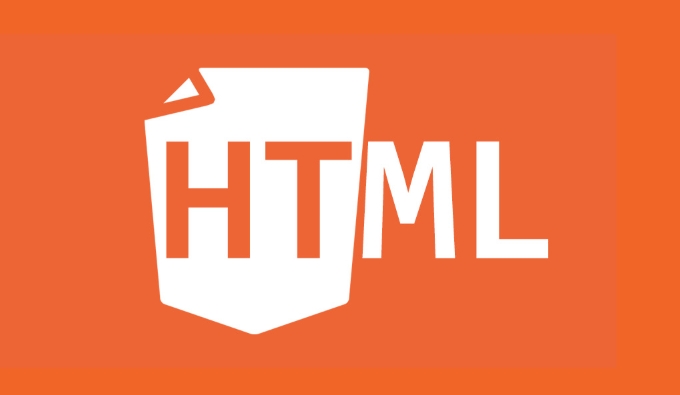Debugging common HTML validation errors.
Jul 03, 2025 am 02:41 AM <p> Don't panic when encountering HTML verification errors. Most problems are actually quite common and easy to solve. The key is to understand the meaning of the error message and know how to change it. Below we have compiled several of the most likely HTML verification errors to encounter and the corresponding processing methods.
<p> Don't panic when encountering HTML verification errors. Most problems are actually quite common and easy to solve. The key is to understand the meaning of the error message and know how to change it. Below we have compiled several of the most likely HTML verification errors to encounter and the corresponding processing methods.

1. Missing required attributes
<p> Some tags require specific attributes to pass verification, such as<img src="/static/imghw/default1.png" data-src="https://img.php.cn/upload/article/000/000/000/175148166575363.jpeg" class="lazy" alt="Debugging common HTML validation errors." > must have src and alt , and <a></a> must have href . If you miss these properties, the validator will report an error.
 <p> How to deal with it:
<p> How to deal with it:
- See the specifications and requirements of each label clearly
- Pay special attention to form elements and multimedia related tags, which usually require strict attributes.
- For example, the
<input>tag should contain at leasttypeandname

<!-- Error writing--> <img src="/static/imghw/default1.png" data-src="photo.jpg" class="lazy" alt="Debugging common HTML validation errors." > <!-- Correct writing method--> <img src="/static/imghw/default1.png" data-src="photo.jpg" class="lazy" alt="Description Picture Content">
2. Improperly nested tags
<p> Label nesting errors are common problems for beginners, such as applying<div> in <p> , or opening a new label if you forget to close a tag.<p> Why errors occur:- HTML structure is not clear, especially when multi-layer nesting is more likely to get confused
- If the editor does not have automatic completion or indent reminder, it is easy to ignore it
- Close it immediately after writing a tag and add content to it
- Use the automatic formatting feature of the code editor to check the structure
- Common error combinations such as
<p><div>...
<div> is a block-level element and cannot be placed in <p>3. Invalid or deprecated tags
<p> Sometimes we accidentally use labels that have been eliminated, such as<center> , <font> , or some old labels that are not supported by HTML5.<p> How to determine if the tag is invalid:- Check the specific prompts given by the validator, and usually say "Element is obsolete"
- Refer to the official MDN document to confirm the tag status
- Rewrite with modern alternatives, such as controlling styles with CSS instead of relying on old tags
<!-- Obsolete writing--> <center>Chinese characters</center> <!-- Recommended writing method--> <div style="text-align: center;">Chinese characters</div>
4. Character encoding issues
<p> The page appears garbled, or the validator prompts "character encoding" error, usually the correct character set is not set.<p> The solution is simple:- Add this line to
<head>:<meta charset="UTF-8">
- Make sure your file is saved as UTF-8 encoding (most editors can set)
- This is especially important if you use Chinese or other non-English characters <p> Basically that's it. Although HTML verification errors may seem annoying, they are mostly small structural or syntax problems that can be quickly fixed as long as you pay attention.
The above is the detailed content of Debugging common HTML validation errors.. For more information, please follow other related articles on the PHP Chinese website!

Hot AI Tools

Undress AI Tool
Undress images for free

Undresser.AI Undress
AI-powered app for creating realistic nude photos

AI Clothes Remover
Online AI tool for removing clothes from photos.

Clothoff.io
AI clothes remover

Video Face Swap
Swap faces in any video effortlessly with our completely free AI face swap tool!

Hot Article

Hot Tools

Notepad++7.3.1
Easy-to-use and free code editor

SublimeText3 Chinese version
Chinese version, very easy to use

Zend Studio 13.0.1
Powerful PHP integrated development environment

Dreamweaver CS6
Visual web development tools

SublimeText3 Mac version
God-level code editing software (SublimeText3)

Hot Topics
 Explain the purpose of the role attribute in ARIA.
Jun 14, 2025 am 12:35 AM
Explain the purpose of the role attribute in ARIA.
Jun 14, 2025 am 12:35 AM
ARIA's role attribute is used to define the role of web elements and improve accessibility. 1. Role attribute helps assistive technology to understand the functions of elements, such as buttons, navigation, etc. 2. Use role attributes to assign specific roles to non-semantic HTML elements. 3. The role attribute should be consistent with the element behavior and be verified by the accessibility tool test.
 HTML and Design: Creating the Visual Layout of Websites
Jun 14, 2025 am 12:39 AM
HTML and Design: Creating the Visual Layout of Websites
Jun 14, 2025 am 12:39 AM
How to create a website layout? 1. Use HTML tags to define the content structure, such as, ,. 2. Control styles and positions through CSS, using box model, float or Flexbox layout. 3. Optimize performance, reduce HTTP requests, use cache and optimize images, and ensure responsive design.
 How can you ensure your HTML code is readable and maintainable?
Jun 10, 2025 am 12:06 AM
How can you ensure your HTML code is readable and maintainable?
Jun 10, 2025 am 12:06 AM
Improve the readability and maintainability of HTML code can be achieved through the following steps: 1. Use semantic tags, such as, etc. to make the code structure clear and improve SEO effect; 2. Keep the code formatted and use consistent indentation and spaces; 3. Add appropriate comments to explain the code intention; 4. Avoid excessive nesting and simplify the structure; 5. Use external style sheets and scripts to keep the HTML concise.
 How do I stay up-to-date with the latest HTML standards and best practices?
Jun 20, 2025 am 08:33 AM
How do I stay up-to-date with the latest HTML standards and best practices?
Jun 20, 2025 am 08:33 AM
The key to keep up with HTML standards and best practices is to do it intentionally rather than follow it blindly. First, follow the summary or update logs of official sources such as WHATWG and W3C, understand new tags (such as) and attributes, and use them as references to solve difficult problems; second, subscribe to trusted web development newsletters and blogs, spend 10-15 minutes a week to browse updates, focus on actual use cases rather than just collecting articles; second, use developer tools and linters such as HTMLHint to optimize the code structure through instant feedback; finally, interact with the developer community, share experiences and learn other people's practical skills, so as to continuously improve HTML skills.
 How do I use the element to represent the main content of a document?
Jun 19, 2025 pm 11:09 PM
How do I use the element to represent the main content of a document?
Jun 19, 2025 pm 11:09 PM
The reason for using tags is to improve the semantic structure and accessibility of web pages, make it easier for screen readers and search engines to understand page content, and allow users to quickly jump to core content. Here are the key points: 1. Each page should contain only one element; 2. It should not include content that is repeated across pages (such as sidebars or footers); 3. It can be used in conjunction with ARIA properties to enhance accessibility. Usually located after and before, it is used to wrap unique page content, such as articles, forms or product details, and should be avoided in, or in; to improve accessibility, aria-labeledby or aria-label can be used to clearly identify parts.
 How do I create a basic HTML document?
Jun 19, 2025 pm 11:01 PM
How do I create a basic HTML document?
Jun 19, 2025 pm 11:01 PM
To create a basic HTML document, you first need to understand its basic structure and write code in a standard format. 1. Use the declaration document type at the beginning; 2. Use the tag to wrap the entire content; 3. Include and two main parts in it, which are used to store metadata such as titles, style sheet links, etc., and include user-visible content such as titles, paragraphs, pictures and links; 4. Save the file in .html format and open the viewing effect in the browser; 5. Then you can gradually add more elements to enrich the page content. Follow these steps to quickly build a basic web page.
 What is an HTML tag?
Jun 13, 2025 am 12:36 AM
What is an HTML tag?
Jun 13, 2025 am 12:36 AM
HTMLtagsareessentialforstructuringwebpages.Theydefinecontentandlayoutusinganglebrackets,ofteninpairslikeand,withsomebeingself-closinglike.HTMLtagsarecrucialforcreatingstructured,accessible,andSEO-friendlywebpages.
 How do I create checkboxes in HTML using the element?
Jun 19, 2025 pm 11:41 PM
How do I create checkboxes in HTML using the element?
Jun 19, 2025 pm 11:41 PM
To create an HTML checkbox, use the type attribute to set the element of the checkbox. 1. The basic structure includes id, name and label tags to ensure that clicking text can switch options; 2. Multiple related check boxes should use the same name but different values, and wrap them with fieldset to improve accessibility; 3. Hide native controls when customizing styles and use CSS to design alternative elements while maintaining the complete functions; 4. Ensure availability, pair labels, support keyboard navigation, and avoid relying on only visual prompts. The above steps can help developers correctly implement checkbox components that have both functional and aesthetics.






